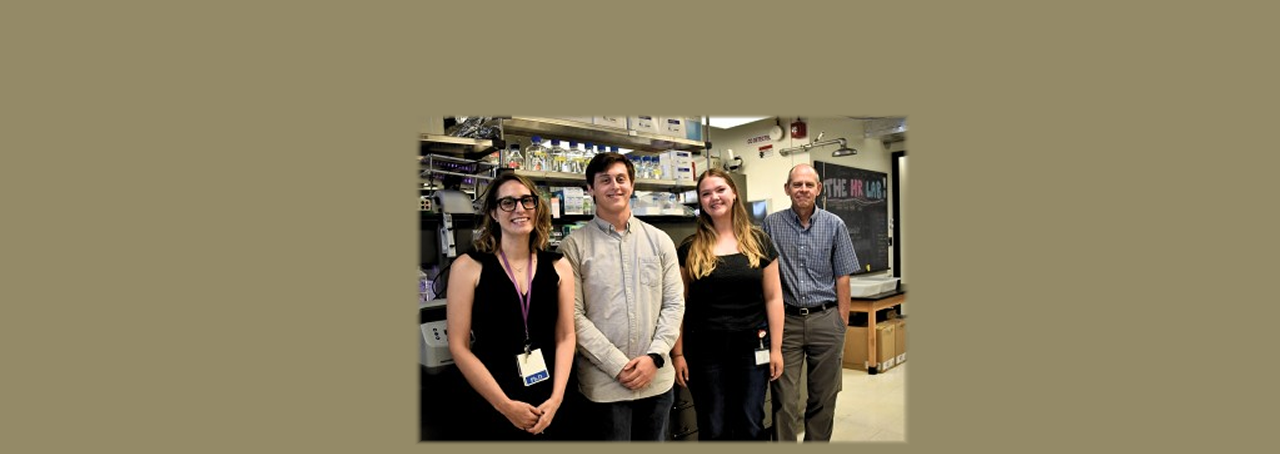Upstate Researcher Continues Innovative Protein Research
Building upon her previous success, an Upstate researcher is turning an early-career award into an established investigator grant, continuing her research on some of the most abundant proteins in the human body.
Jessica Henty-Ridilla, PhD, is an associate professor of biochemistry and molecular biology, and her lab is focused on investigating the convergence of actin, microtubules, & biomolecular condensates in native and disease states. Five years ago, she was the first early-stage researcher at Upstate to be awarded the Maximizing Investigators' Research Award (MIRA) from the National Institute of General Medicine Sciences (NIGMS). This grant was developed to solve a problem encountered by researchers during their federally funded research, a lack of flexibility. Now, she’s been awarded a five-year renewal of this grant, awarding her lab $2.2 million to continue their research.
"Sometimes you’ll start testing your specific aims and they don't go the way that you think, and that's science,” Henty-Ridilla explains. “With MIRA, you can lay out some general research themes and knowledge gaps that exist and show how your lab is positioned to address those research questions.”
Henty-Ridilla used that first five years of funding for a variety of projects; including creating new tools to study the proteins her lab is focused on. One protein they worked to learn more about is how IQGAP1; a “scaffold protein” regulates actin in a range of cellular activities that can promote tumor growth and cancer invasiveness.
“IQGAP can jump onto the end of actin filaments and stop new subunits from adding to growing actin filaments, but only for about 20 seconds,” says Henty-Ridilla. “This always intrigued and bothered me. Why for such a short period of time, especially when cells have more efficient proteins with similar activities? Why would a cell need this?"
Studying this question led her team attempt a four-color ‘Total Internal Reflection’ (TIRF) microscopy technique to understand that IQGAP isn’t a “capping” protein at all, but a “end-protein displacement factor” and without it, cells can change their shape and migrate incorrectly. "Traditionally people are just doing this technique in a single wavelength, sometimes two; it gets harder with each wavelength that you add.” They are one of few labs that can perform this technique with four separate wavelengths at the same time. “In the context of cells, it could be helpful to have a protein that can go and ‘refresh the ends’, if you will. We could only see how this works with our four-color system,” she explains.
Henty-Ridilla and her team, among other projects, also created a new tool to purify actin from yeast. Previously most research used actin from animal muscle, which allows researchers to focus on a single type of actin, simplifying their experiments.
Now, with her MIRA renewal, Henty-Ridilla will be able to take these tools and expand on her lab’s work. One of their goals is to measure actin dynamics in a cell.
"Knowing when a protein isn't where it's supposed to be and the consequences for a cell is incredibly informative for people that are studying these issues in actual patients and for people who are designing drugs.”
Henty-Ridilla emphasizes the importance of understanding the basic science of cell and protein functions. “It sort of feels like a passion project, but it’s really important.” She points to the Nobel Prize won by Katalin Karikó and Drew Weissman, the team from UPenn who’s decades of research on mRNA allowed COVID vaccines to be developed and deployed quickly. “it's important to know how the basic things work, because we don't always know what's going to be the most important thing for us to know.”
You can learn more about the Henty-Ridilla lab and their work here.
For more on Upstate’s department of Biochemistry and Molecular Biology, visit their website at https://www.upstate.edu/biochem/
comments powered by Disqus


